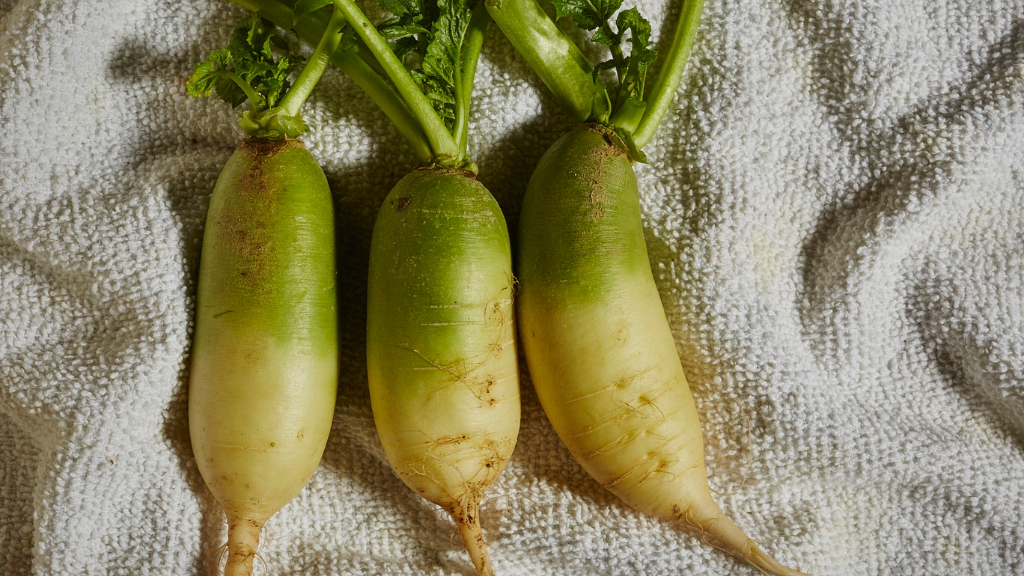Chinese Green Radish History: What Is A Qingluobo Radish


The Chinese Green Luobo radish, also known as the Qingluobo radish, is an exciting and unique heirloom vegetable that is known both for its delicious taste and its striking color. If you like radishes, but you're tired of the plain old red and white varieties, then this radish is for you!
What is a Qingluobo Radish?
Chinese green radishes are best known for their color, which is bright green both inside and out. The skin is deep bright green toward the stalk, often fading to white near the roots. (Just like lots of traditional European radishes that fade from red to white). Inside, the flesh is also bright green, though it's a lighter, fresher shade. The combined shades of green make for a really attractive cross section when sliced for salads or pickles. The individual radishes grow to a decent size, reaching 6 to 12 inches (15-30 cm.) in length, and are the same shape as a daikon radish. Their flavor is strong and spicy, similar to that of horseradish. There is, however, a very pleasant sweetness beneath the heat. They can be eaten raw, pickled, or cooked. The leaves are also edible and very pleasantly spicy.
Growing Chinese Green Radish
Qingluobo radishes are native to northern China, where temperatures get low. This means the plants are very well adapted to the cold and will grow well even in below freezing temperatures. Unfortunately, this also means they're mal-adapted to heat and likely won't perform well if you try to grow them in the hot summer. They are best planted as a fall crop. Gardeners report that, unlike other radishes, they retain their peppery flavor even in cold weather. Seeds are about 60 days to maturity. If allowed to bolt (which may very well happen if you plant them in the summer), the plants produce lots of delicate purple flowers.
Gardening tips, videos, info and more delivered right to your inbox!
Sign up for the Gardening Know How newsletter today and receive a free copy of our e-book "How to Grow Delicious Tomatoes".

The only child of a horticulturist and an English teacher, Liz Baessler was destined to become a gardening editor. She has been with Gardening Know how since 2015, and a Senior Editor since 2020. She holds a BA in English from Brandeis University and an MA in English from the University of Geneva, Switzerland. After years of gardening in containers and community garden plots, she finally has a backyard of her own, which she is systematically filling with vegetables and flowers.
-
 Looking For Plants To Give You The Soft And Fuzzies? Try These 5 Fuzzy Leaf Plant Options
Looking For Plants To Give You The Soft And Fuzzies? Try These 5 Fuzzy Leaf Plant OptionsLovers of texture, drama, silver foliage and tactile plants will adore these special sensory garden additions. These fuzzy leaf plant options will leave you all aglow
By Susan Albert
-
 Get Ready For A Summer Of Hummers! Grow These Full Sun Hummingbird Plants and Flowers
Get Ready For A Summer Of Hummers! Grow These Full Sun Hummingbird Plants and FlowersIf you’re lucky enough to enjoy a sunny backyard, make sure you are maxing out on your pollinator opportunities and grow these full sun hummingbird plants and flowers
By Tonya Barnett